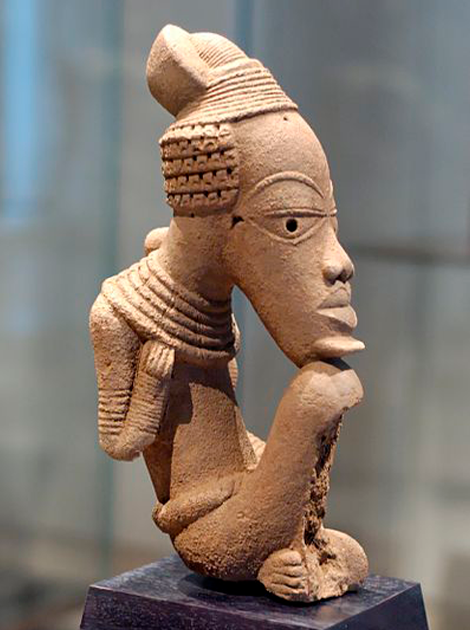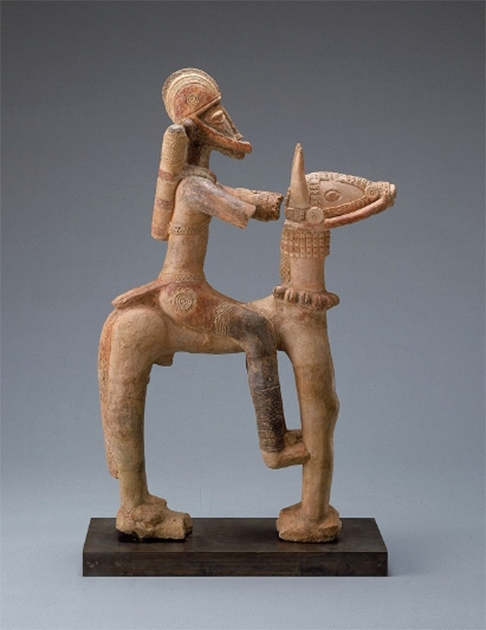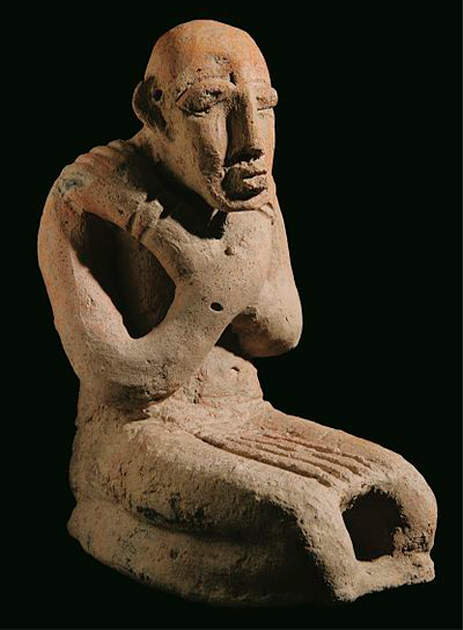Amidst the vast expanses of the Malian region, there once flourished a remarkable civilization. How do we know? The unique terracotta figurines of Djenne-Djenno give historians a glimpse into the rich and fascinating history of this region.
These precious artifacts are not only beautiful works of art but also offer deep insights into the daily life, beliefs, and practices of the ancient people who once lived in Djenne-Djenno. From religious and ceremonial significance to their historical and educational value, these figurines offer a tangible link to the past, and a chance to explore a civilization that existed thousands of years ago.
A Glimpse into the Crafty Region of Djenne-Djenno
Djenne-Djenno was an ancient city located in what is now Mali, West Africa. It was one of the oldest known cities in sub-Saharan Africa and is believed to have been founded around 800 BCE, making it over 2,800 years old. The origins of Djenne-Djenno are linked to the Nok culture , a prehistoric civilization that existed in what is now Nigeria. The Nok people were known for their ironworking and terracotta sculptures , and their influence can be seen in the art and technology of Djenne-Djenno.

Character with chin resting on his knee. Nok sculpture, Nigeria . ( Public domain )
Over time, Djenne-Djenno became a center of trade and culture, with a thriving economy based on agriculture, fishing, and ironworking. It was strategically located at the confluence of the Niger and Bani rivers, which allowed it to become a major trading center for goods like salt, gold, and slaves. The city also developed a distinctive urban culture, with impressive architecture, public spaces, and religious practices.
Djenne-Djenno was known for its advanced technology and skilled craftsmen, particularly in the fields of pottery and metalworking. The city was home to numerous ironworkers, who produced high-quality iron tools and weapons that were traded throughout West Africa. The people of Djenne-Djenno were skilled potters and sculptors, and they produced a wide variety of intricate and high-quality clay objects, including figurines.

A terracotta figurine depicting a cavalry warrior of the Mali Empire, 13th-15th century at the National Museum of African Art, Washington D.C. ( Public Domain )
The Djenne-Djenno figurines were created over a period of more than 1,000 years, from the 3rd century BC to the 13th century AD. Although the exact reasons for the decline of Djenne-Djenno are unclear, it is believed to have declined in the 13th century CE due to a combination of factors, including climate change, shifting trade patterns, and political instability.
An Essential Piece of Djenne-Djenno’s Puzzle
Discovered during archaeological excavations that began in the early 20th century, the Djenne-Djenno unique figurines were made entirely by hand using a coiling technique that involved rolling clay into long ropes and then layering them to create the desired shape. The figurines were then fired in kilns to make them hard and durable.
The discovery of these remarkably crafted figurines was essential to learning more about the history of Djenne-Djenno. These figurines offer valuable insights into the daily life, beliefs, and practices of the people who once lived in this now-abandoned region, giving historians a glimpse into the rich cultural heritage of the region. They are not only historical treasures, but also spiritual objects that were highly valuable to the community that once thrived there.
The Stunning and Intricate Beauty of Djenne-Djenno’s Handmade Figurines
The figurines of Djenne-Djenno are small, handmade clay figurines that vary in size, ranging from a few centimeters to several inches in height. They are made of terracotta, a type of clay that has becomes hard and durable once it is fired.
The figurines depict a wide variety of subjects, including human figures, animals, and mythical creatures. What sets them apart is their highly stylized appearance with exaggerated features. Some of the human figures have elongated necks, arms, and legs, while the animal figures are often depicted with oversized heads and long, thin bodies.
Each figurine is a remarkable work of art that demonstrates a high level of skill and craftsmanship. They are adorned with intricate designs and patterns, and some are decorated with beads, shells, and other materials. Finally, many of them are painted with natural pigments, such as red and yellow ochre, which give them a vibrant and colorful appearance.
Offerings to the Gods or Simple Kid’s Toys?
The figurines of Djenne-Djenno hold many secrets, and while their exact uses are not fully understood, the clues left behind hint at a range of intriguing possibilities. According to scholars, the figurines were likely used for a variety of purposes, including religious, ceremonial, and practical uses.
One theory suggests that the figurines were used in religious ceremonies as offerings to the gods, or as representations of important figures in the religious pantheon. It’s also believed that the figurines were used in ancestor worship, where they represented deceased family members and were believed to hold spiritual power.

Mali culture Djenne anthropomorphic figure from the 11th century to 16th century. (Fundacion Arellano Alonso/ CC BY-SA 4.0 )
Some of the figurines were also found in the remains of homes, suggesting they may have also been used as household decorations or perhaps even as toys. The inclusion of animal figures in the collection raises the possibility that the figurines were also used as playthings for children. The exact uses of the figurines remain shrouded in mystery, but their versatility and adaptability make them all the more intriguing.
A Source of Pride for Mali
Djenne-Djenno, though now in ruins, is a strong source of cultural pride for the people of Mali. Now designated as a UNESCO World Heritage site, it stands as a testament to the ingenuity and creativity of the ancient civilization that once called it home.
The terracotta figurines of Djenne-Djenno, in particular, have captivated the attention of collectors and scholars alike, inspiring artists and designers with their beauty and historical significance. These treasured artifacts offer a tangible link to the past and continue to provide valuable insights into the rich cultural heritage of West Africa.
With many of the figurines now on display in museums around the world, the figurines of Djenne-Djenno serve as a lasting legacy of the people who created them and the civilization that once flourished there.
Top image: Male figure, 14th-17th century and female figure, 13th-–15th century. Source: Sailko/ CC BY 3.0 /Musée du quai Branly/ CC BY-SA 3.0
By Lex Leigh
Related posts:
Views: 0
 RSS Feed
RSS Feed

















 March 17th, 2023
March 17th, 2023  Awake Goy
Awake Goy  Posted in
Posted in  Tags:
Tags: 
















